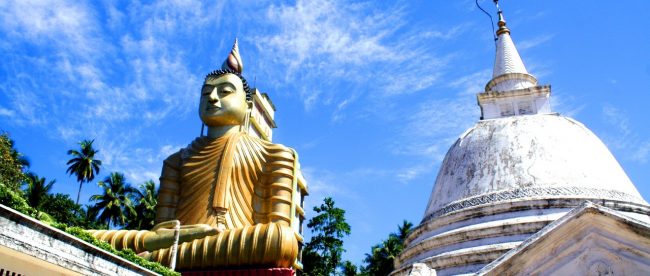Forms of Buddhism: Wiki from Buddhatooth

Buddhism is one of the largest religions, and did you know that there are roughly 450 forms of Buddhism? It’s quite a large number compared to other world religions, but it’s true. In this article, we will tackle the major forms and explore their features.

3 Major Forms of Buddhism
There are many reasons why we cannot know for sure how many Buddhists there are, but we can say that religion has split into three major forms. It’s also because of Buddha himself. He never made one-size-fits-all teaching. His messages were based on the people he faced. Despite this, many sects of Buddhism are somehow unified on core doctrines.
There are 3 major schools or forms of Buddhism:
- Theravada
- Mahayana
- Vajrayana
Let’s explore these schools of Buddhism in more details.
You might also like:


Theravada Buddhism
The Theravada or “the Teachings of the Elders” came from South Asia. This school is unified based on basic, common doctrines. Yet there are slight contrasts in terms of practice.
This school is the most orthodox form of Buddhism, and the earliest known teachings of the Buddha are found in its Pali writings. The school’s focus is on a mindful approach to transforming the conscious self.
They believe that Buddha’s teaching is very simple: to abstain from all kinds of evil, gather all that is good and cleanse the mind. These can be done by “The Three Trainings”, which promotes good conduct, meditation and insight or wisdom.
The school has a forthright view of things. All things in the world are subject to three traits: transient, no real pleasure, and no substance. All things have non-material and material aspects. The non-material aspects of things include sensations, perception, mental image, and consciousness.
This school believes that there is nothing in the world that has real substance, once you find out the true nature of things. Our suffering is caused by craving for material things, and suffering can end if we follow the Noble Eightfold Path. When a person reaches a perfect state of insight, that person becomes an “Arhat” or “worthy person”. This is the ideal life, where all that has to be done is done, and there is no point in going back to the worldly life.

Mahayana Buddhism
Mahayana Buddhism is referred to as “The Great Vehicle”, and is greatly practiced in China, Korea and Japan. This form of Buddhism is never really a distinct school. It’s more of an umbrella body for many schools of thought.
Unlike the Theravada school which delves on self-enlightenment, this school teaches that Buddhas and Bodhisattvas help us attain collective enlightenment. This school’s focus is on intuition. To achieve enlightenment, one must look inward, not outward.
Mahayana Buddhism is split into two schools of thought: the Madhyamika and the Yogacara. For the Madhyamikas, one should follow the “Middle Path”, which stands for non-acceptance of the two views about existence and non-existence, eternity and non-eternity, and self and non-self. It advocates “relativity”, rather than the reality and non-reality of the world.
On the other hand, the Yogacara’s focus is on the practice of yoga meditation. For them, it’s the most useful method for reaching the “Bodhi” or the highest truth. And one should surpass ten spiritual stages of Bodhisattva life to achieve it.
This school also believes in the Bodhisattva, the ideal person who attains the highest truth. These are super beings that devote themselves to knowledge, perfection, and freedom from worldly things. Bodhisattvas are selfless and delay their own enlightenment to help other people.

Vajrayana Buddhism
Technically, Vajrayana arose from Mahayana Buddhism and is believed by some to be subsect. Yet most Buddhist scholars think of it as a separate school because of their distinct doctrines and practices. This school of Buddhism is most active in Tibet, Japan, and China.
The focus of this school is on tantrism. It’s a school of knowledge, rituals, and mantras.
They substitute meditation with purpose-driven practice. And for them, one must be trained by a skilled spiritual teacher to attain knowledge.
But like the Mahayana, the main goal is to become a Buddha. There are certain techniques that lead to this path, but it must be kept “secret” outside the teacher and the student. This secrecy is about the commitment or “sacred bond” between the teacher and student, and it protects the virtue of the teachings.
Despite the many forms of Buddhism, bear in mind that Buddhism is formed from binding core doctrines and practices that define it as a world religion.

Disclosure: At Buddhatooth.com we only mention the products that we’ve researched and considered worthy. But it’s important to note that we are a participant of several affiliate programs, including but not limited to VigLink and Amazon Services LLC Associates Program, an affiliate advertising program designed to provide a mean for us to earn fees by linking to Amazon.com and affiliated sites. As an Amazon Associate Buddhatooth.com earns from qualifying purchases.

